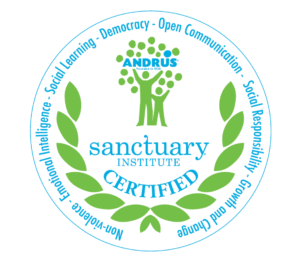Sanctuary Model of Care
WHAT IS SANCTUARY?
The Sanctuary Model® is a blueprint for clinical and organizational change which promotes safety and recovery from adversity through the active creation of a trauma informed community.
The Sanctuary Model® is a vehicle for trauma informed care. It uses a set of values to help communities become safe and more able to care for its members. The Sanctuary Model® maximizes our strengths and minimizes our weaknesses. It also buffers us from chronic stress and trauma. It creates a community of healing that has some specific attributes:
- Shared language
- Organizing structure
- Focus on impact of stress
- Focus on growth and change
- Consistent contact with client/families
SANCTUARY AT THE METHODIST HOME
Sanctuary is our way of empowering ourselves to take care of others by ensuring the safety, support and well being of our employees, children, families and communities while we embrace loss and inspire hope.
SEVEN COMMITMENTS:
- Nonviolence – being safe outside (physical), inside (emotionally), with others (social) and to do the right thing (moral)
- Emotional Intelligence – managing our feelings so that we don’t hurt ourselves or others
- Social Learning – respecting and sharing the ideas of our team
- Open Communication – saying what we mean and not being mean when we say it
- Social Responsibility – we accomplish more together; everyone makes a contribution to the organizational culture
- Democracy – shared decision making
- Growth and Change – creating hope for our clients and ourselves
The shared language of the Sanctuary model is the SELF model. The SELF model recognizes that organizations need a model for structuring change that provides a non-linear nature of change. It provides a framework of focus and intervention with clients, families and the organization itself. It also provides a simple and accessible language for everyone working for change.




Safety – physical, psychological, social and moral
Emotion Management – recognizing and handling feelings in non-harmful ways
Loss – acknowledging and grieving past losses or traumas and committing to work against getting stuck in the past while recognizing that all change involves loss
Future – re-establishing the capacity for choice and engaging in new behaviors rather than repeating old patterns
COMMUNITY MEETING
 Throughout each day, employees, children, youth and families engage in a process known as a “Community Meeting.” In short, it is a time dedicated to checking-in with each other to ensure we are remaining connected with one another. A Community Meeting consists of asking three simple questions to anyone present:
Throughout each day, employees, children, youth and families engage in a process known as a “Community Meeting.” In short, it is a time dedicated to checking-in with each other to ensure we are remaining connected with one another. A Community Meeting consists of asking three simple questions to anyone present:
- How are you “feeling” today?
- What is your goal for today?
- If you encounter any challenges or need any assistance, who will you ask for help?
